Declared on June 9th, 2021 as a national park covering a contiguous forest area of 422 km2, Raimona National Park is the sixth national park of Assam, India. The park is famous for its endemic species golden langur. The golden langur is designated as the mascot of BTR (Bodoland Territorial Region is the 6th Schedule Autonomous Council within the State of Assam, India). The park is also inhabitant by various other species such as elephant, Bengal tiger, wild bison, white-spotted deer, clouded leopard and wild buffalo. It has recorded four to five species of hornbills,170 species of birds, more than 150 species of butterflies, 380 varieties of plants and orchids.
Where is Raimona National Park located?
Raimona National Park is located in the westernmost part of Assam and at the southern foothills of Eastern Himalaya together with Phibsoo Wildlife Sanctuary of Bhutan and Buxa Tiger Reserve of West Bengal forms a fairly large transboundary conservation landscape of more than 2,400 km2. It is situated at an altitude ranging from 85 meters to 1042 meters above sea level.
The park is spread across the Gossaigaon subdivisions of the Kokrajhar district of BTR, Assam. It is 253km away distance from Guwahati and 53 km from Kokrajhar and coordinates 26.65972°N 89.97611°E.
Location, Area, Administration and Name
- District : Kokrajhar
- Sub-Division : Gossaigaon
- Forest Division : Kachugaon Forest Division
- Ranges : 1. Eastern range -Athiabari range, 2.Sanfan Range, 3.Kochugaon Central range, 4.Western range -Raimona Range
- Area : 422 Sq. Km.
- Administration : BTR government is the head administration of the park and the Kachugaon Forest division is the administer the park.
Raimona National Park Map, Boundary
The map and boundary of Raimona National Park are formed naturally by Sonkosh River in the west and Sarabhanga River in the east which flows from Bhutan.
North: The northern part of Raimona National Park shares the Indo-Bhutan international border with Phibsoo Wildlife Sanctuary in Bhutan.
West: The western part is marked by the Sankosh River along with the inter-state boundary of West Bengal and Assam from the Indo-Bhutan border up to fire line Ride-6 heading in the south (BP30).
East: In the eastern part of Raimona National Park, The Saralbhanga River (also called Swrmanga) flows southward from Sarphang district of Bhutan. Known as Sarbhang Chu River in Bhutan. Saralbhanga River at the eastern fringe of Raimona National Park in the foothills of Bhutan international border is a popular picnic spot destination attracting from all over the state.
South: The southern boundary of Raimoan National Park runs eastwards along the fire line Ride-6 up to Pekua River. Then it runs at 90 degrees southwards until it meets the fire line Ride-3.
Raimona National Park Map
Raimona National Park History
On June 5th, 2021, Assam’s Chief Minister, Himanta Biswa Sarma, made the official declaration of Raimona National Park at a World Environment Day ceremony held at Gandhi Mandap in Guwahati, Assam. The official designation was made on June 9th, 2021 through the Assam Gazette Notification no. FRW.02/2021/27, dated June 8th, 2021, making Raimona National Park the sixth national park in Assam, India covering a vast forest area of 422 km2.
With the declaration of Raimona National Park, the Bodoland Territorial Region (BTR) now has two national parks including Manas National Park.
Raimona National Park was originally part of both the Ripu Reserve Forest and the adjacent Chirang Reserve Forest known as Chirang-Ripu Reserve Forest located at the westernmost buffer to Manas National Park & Tiger Reserve in the foothills of the Eastern Himalaya Biodiversity hotspot. Known for its historical elephant habitats with a diverse range of flora and fauna in its vast forests area, the Government of Assam declared Chirang-Ripu Reserve Forest as Chirang-Ripu Elephant Reserve in 2003 covering an area of 2600 km2.
The present Raimona National Park was initially proposed as Ripu-Chirang Wildlife Sanctuary. The park being part of Chirang-Ripu Reserve Forest its adjacent part was also mooted to be within.
The Raimona National Park falls under the DFO, Kacuhgaon Forest Division of CCF & CHD, (Chief Conservator of Forests & Council Head of the Department) BTR, Kokrajhar. The Kacuhgaon Forest Division has 4(four) ranges- 1. Eastern range -Athiabari range, 2. Sanfan Range, 3. Kochugaon Central range, 4. Western range -Raimona Range.
Construction of Railway Tramline in Kachugaon Forest in 1924
In 1906, a proposal was made for a 21-mile metre gauge tramline from Kokrajhar to the Saralbhanga River to supply railway sleepers at minimal benefit to the Forest Department and to obtain ballast at a low cost for the Eastern Bengal Railway. However, the proposed connection never materialized.
The Kachugaon Tramline was built to profit from the lucrative timber trade to Bengal. In 1924, 19-mile length a feeder forest tramline connection to the Eastern Bengal Railway’s trunk line between Fokiragram and Kachugaon was completed. It crossed through present-day Raimana National Park, Kochugaon, Hel, Kujrabguri, Amlaiguri, Samtaibari, and Dotma junction at Fokiragram.
As the Kachugaon forest tramway was completed the Conservator proposed purchasing two steam locomotives and twenty trucks to economize on extraction and transportation of timber. The Eastern Bengal Railway became the largest buyer of sleepers at nominal costs after the completion of Kachugaon tramline.
Meanwhile, this vintage tramway was totally destroyed during times. However, remnants of the engine, tramline and bogies of the tram are lying abandoned in Kachugaon.
Involvement of Organizations in the Conservation of Raimona National Park
Raimona Golden Langur Eco-Tourism Society (RGES)
Raimona Golden Langur Eco-Tourism Society (RGES) is a community-based Society formed with the motto “To Serve, Explore and Conserve” on 26th June 2021 soon after the declaration of Raimona National Park. It has promised to work with the forest department on conserving the natural heritage of Raimona National Park. The RGES nomenclature is taken from Golden Langur for which Raimona National Park is famous and has a head office opposite to Raimona western range office.
The RGES promotes tourism such as Sankosh River Bath, Safari tour, Jungle trekking, Rafting, Jungle Cycling tour, Butterfly watching, Bird watching, trips to Bodo villages and Bodo Cultural Exhibition. It also provides food and accommodation and Homestays in designated Bodo Villages.
Raimona National Park Photo: Elephant
Eco Task Force of Territorial Army to restore deforestation
Eco-Task Forces of the Indian Territorial Army have been working in Kokrajhar district covering Raimona National Park under the state Forest Department to plant lakhs of trees to restore the eco-balance in the denuded forest belt between Bhutan and BTR since 2012.
The ETF plants almost nine lakh saplings every year and has so far planted more than four million trees in Assam.
Aaranyak and David Shepherd Wildlife Foundation’s constant support:
Aaranyak (www.aaranyak.org) is a premier organization devoted to the research-based conservation of biodiversity sustained and significant support towards complementing efforts of the Forest authorities in the conservation of wildlife in Raimona Nationa Park. Aaranyak in an effort to facilitate the movement of frontline forest staff where infrastructure and logistics are being augmented provided four motorcycles to four ranges of Raimona National Park in 2022.
With support from David Shepherd Wildlife Foundation (DSWF), a UK-based non-profit, Aaranyak procured 10 high-end Motorola wireless communication devices and provided them to four range officers of the national park on January 2023.
Phibsoo River flows from Bhutan: Forest Guard Patrolling Raimona National Park
57 Poachers of Raimona National Park Surrender
On September 22, 2021, On the occasion of World Rhino Day, at least 57 poachers of Raimona National Park in Kokrajhar district in Assam surrendered with arms in a village near the national park before the BTR administration. Presenting each of them a cheque of Rs 50, 000 to sustain their livelihood Chief Executive Member of BTR, Pramod Boro said that since Raimona has been declared as a National Park, the poachers do not want to hunt anymore. The government is planning to further grant an amount of Rs 1.20 lakhs for setting up a new business to honor their step and to protect their livelihood.
The poachers who once posed a significant threat to the park’s ecosystem are now working side by side with the RGES and other conservationists. Their newfound commitment is directed towards combatting illegal activities, monitoring wildlife populations, and raising awareness within their communities about the importance of preserving biodiversity. Their unique perspective and intimate knowledge of poaching practices have proven invaluable in formulating effective strategies to thwart illegal wildlife trade and safeguard the Raimona National Park.
Watch video: Raimona National Park
Raimona National Park Weather
The weather in Raimona National Park varies by its location in the tropical region and the climate is hot and humid most of the year. Its temperature varies from 7⁰ C to 35⁰ C and rainfall ranges from 15mm in winter to 1162mm in monsoon.
- Summer: The summer starts from April to June is particularly hot and dry with temperatures often reaching over 32-35 degrees Celsius.
- Monsoon: The monsoon season starts from July to September bringing heavy rainfall to the region and temperatures often reaching over 26-36 degrees Celsius.
- Winter: The winter months starting from October to March are relatively cooler and more comfortable with temperatures ranging from 10 to 25 degrees Celsius.
Raimona National Park Geography
The geography of Raimona National Park is characterized by its hilly terrain, with several ridges and valleys spread across the park. The park’s ground is gently sloping towards the south. Its elevation varies from 85-240m above mean sea level. Sonkosh, Pekua, Hel and Saralbhanga which flow from Bhutan are the four notable rivers, however during the dry season innumerable rivulets and streams of which most remain waterless.
The soil over the bulk of Bhabar (Bhabar is the gently-sloping coarse alluvial zone below the foothills of the Himalayas) area is dry. Its sandy loam is superimposed on a bed of pebbles with a very thin humus layer. Surface stones are fairly frequent. The lower regions of the park are covered with tropical evergreen forests, while the higher regions are covered with subtropical and temperate forests.
Exploring Biodiversity and Ecological Wonders of Raimona National Park
The Raimona National Park boasts a unique geographical location and geology that supports a wide variety of flora and fauna including the golden langur and a variety of butterfly species.
Flora: As many as twelve different types and sub-types of forests can be found in the Raimona National Park ranging from very moist sal forests, sub-Himalayan high alluvial semi-evergreen forests, savannah forests, moist-mixed deciduous forests, riparian fringing forests to khoir-sisoo forests. The park has also recorded more than 380 varieties of plants and orchids.
This diverse range of forests clearly projected a high level of faunal diversity within the park.
Fauna: One of the most unique and rare animals found in the Raimona National Park is the golden langur. The golden langur is a beautiful primate with a bright golden coat and a long tail. They are arboreal and live in 6 to 10 small groups.
Raimona National Park Photo: Golden Langur, Mascot of BTR
Other important mammals found in this national park include the Chinese pangolin, Asian elephant, wild dog, Himalayan black bear, crab-eating mongoose, jungle cat, leopard cat, Asian golden cat, Bengal tiger, Himalayan serow, clouded leopard, gaur, sambar, chital, barking deer, hog deer, crestless and Himalayan porcupine. It has recorded four to five species of hornbills,170 species of birds, more than 150 species of butterflies.
A Mainland Serow (Capricornis sumatraensis thar) has been photographed for the first time in Raimona National Park during the first week of July, 2024. This shy and vulnerable animal, according to the International Union for Conservation of Nature (IUCN), was captured on camera using traps set by forest officials and the biodiversity group Aaranyak. The sighting of the Serow, also present in Bhutan’s Royal Manas National Park, highlights the potential for cross-border conservation efforts. Aaranyak scientists pointed out that the Serow’s habitat ranges from the Himalayas to Sumatra.
Raimona National Park Photo: Mainland Serow
Avifauna: As per research report “A Preliminary Checklist of Avian Fauna from Raimona National Park of Assam, India” by Nilutpal Mahanta and his team surveyed from November 2020 to April 2021 using systematic grid-based line transect method, the Raimona National Park is confirmed presence of minimum 227 avian species including 7 globally threatened, two are critically endangered; White-rumped vulture and Slender-billed vulture, five are vulnerable; Greater spotted eagle, Great hornbill, Wreathed hornbill, Rufous-necked hornbill, Lesser adjutant and seven are near threatened.
There are 43 migratory and 184 residential birds with 45 aquatic and 182 terrestrial species. The dominant birds across all habitats are Black-crested bulbul, Black drongo, and Golden-fronted leafbird. Passeriformes comprises 116 species making it the most diverse group with 51% of the avian fauna. The White-bellied heron from Phipsoo Wildlife Sanctuary of Bhutan as well as from Raimona National Park also recorded critically endangered.
Raimona National Park Photos: Avifaona
Butterfly: In 2009, zoologist and assistant professor Kushal Choudhury of Kokrajhar Science College discovered two rare butterfly species in Raimona National Park. One was the yellow-crested spangle which had not been sighted in the area for 100 years. The other was Moore’s Cupid, a species primarily found in China and Japan. Choudhury published a paper describing the two species of his findings in 2010.
Raimona National Park Photo: Butterflies
Best Time to Visit Raimona National Park
Raimona National Park experiences a tropical climate, thus the best time to visit for a wildlife tour is winter.
During winter (November to February 5°C – 25°C) the weather is mild and dry. The park’s vegetation is extravagant during winter and wildlife is frequently sighted.
During the summer season (February to May: 7°C- 37°C) the region is very hot and humid during the day making outdoor activities uncomfortable but at night remain mild. However, if you can bear the heat, this season can also great opportunity for bird-watching and butterfly-spotting.
During Monsoon (June to October 10°C – 35°C) it is not good to visit Raimona National Park for a wildlife holiday. The park experiences rainfall of 2,220 mm during monsoon and remains closed to visitors during this period.
How to Reach Raimona National Park?
By Air: Nearest Airport to Raimona National Park is Rupshi Airport, Kokrajhar. One can book a flight straight from Lokpriya Gopinath Bordoloi Airport, Guwahati to Rupshi Airport. The approximate distance from Rupshi Airport to Raimona National Park is 76 km which takes 2 hours (approx.).
By Train: Nearest Railway Station to Raimona National Park is Gossaigaon Railway Station. The distance from Gossaigaon Railway to Raimona National Park is 32 KM and from Kokrajhar Railway Station is 54 km which takes about 1.4 hours to reach the vicinity.
By Road: To reach Raimona National Park by road one can take from (Siliguri-Alipur Duar-Barobisha-Srirampur Check Post-237km), Guwahati (253 km). One can enjoy a long road trip on the National Highway (NH31).
Where to Stay?
There are several Homestays to dormitories, and an assortment of accommodation options are available located near Raimona National Park. Homestays designed in Bodo Villages provide food and accommodation. It is suggested to book ahead and pay in advance. Most hotels are maintained by the Forest departments. However, if the accommodation option is not available there are nearby major cities one can find expediently from Gossaigaon and Kokrajhar town.
How to go the park?
If one wants to go for Kochugaon Central Range Jungle Safari, one has to go to Kochugaon Forest Block-Central Range Office, and for Western Range Jungle Safari one has to go to Raimona Forest Range.
You can visit Sanfan Range along with Kochugaon Central Range Jungle Safari.
What is the visit charge of Raimona National Park?
| Charges | Half-Day Visit | Full-Day Visit |
| Jeep | INR 3000 | INR 5500 |
| Escort Charge | INR 300 | INR 600 |
| Entry Fee | INR 400 | INR 400 |
| Per Head Charge | INR 100 | INR 100 |
| Camera Charge | INR 100 | INR 100 |
Conclusion
Overall, Raimona National Park is the conservation of local flora and fauna. The park covered with tropical evergreen forests and subtropical temperate hilly forests is part of a larger transboundary landscape conservation effort that spans across the international borders of India and Bhutan. The park is also a suitable destination for tourism and can enjoy such as Gypsy Safari tour, Jungle Cycling tour, Jungle trekking, Rafting, Sankosh River Bath, wildlife watching, Butterfly watching, Bird watching, Bodo Cultural Exhibition and trips to Bodo villages.
FAQ
Why is the Raimona National Park famous for?
Raimona National Park is famous for its golden langur.
Where is Raimona situated?
In Kachugaon Forest Division in the Kokrajhar district under the Bodoland Territorial Region (BTR) of Assam, India.
What is the name of 6th National Park in Assam?
Raimona National Park.
What is the attraction of Raimona National Park?
BTR mascot Golden Langur is the prime attraction of Raimona National Park
Which railway station is near Raimona National Park?
Gossaigaon Railway is 32 KM and Kokrajhar Railway Station is 53 km from Raimona National Park.
You May Also Like
- Orang National Park
- Pobitora Wildlife Sanctuary
- Dehing Patkai National Park
- Dibru Saikhowa National Park
- Dibang Wildlife Sanctuary
References
- Raimona Golden Langur Eco-tourism Society (RGES). https://raimonagoldenlangur.org/
- Raimona National Park-https://en.wikipedia.org/wiki/Raimona_National_Park
- https:// A Preliminary Checklist of Avian Fauna from Raimona National Park of Assam, India, http://pubs.sciepub.com/aees/10/11/1/
- The birth of Raimona, Assam’s sixth national park-https://india.mongabay.com/2021/11/the-birth-of-raimona-assams-sixth-national-park/

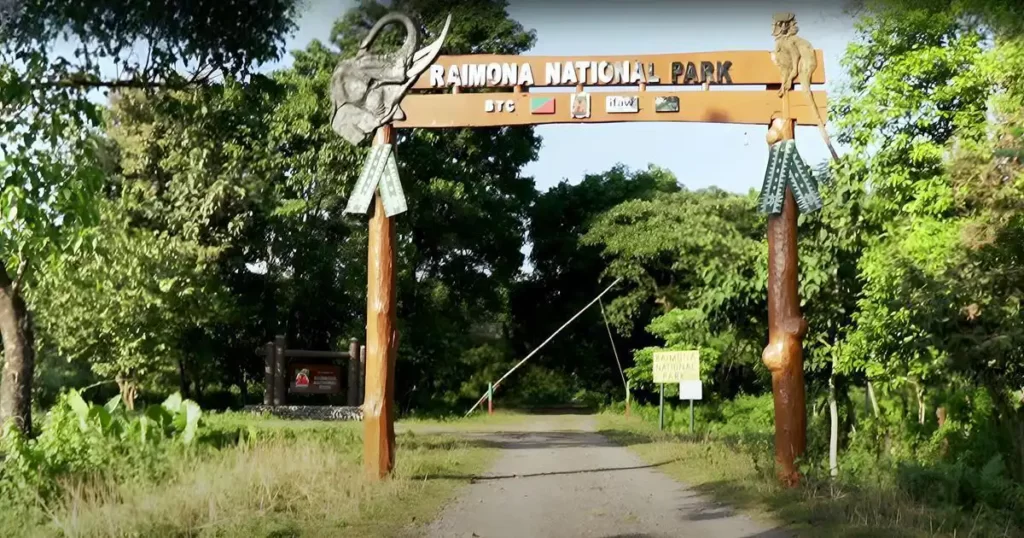


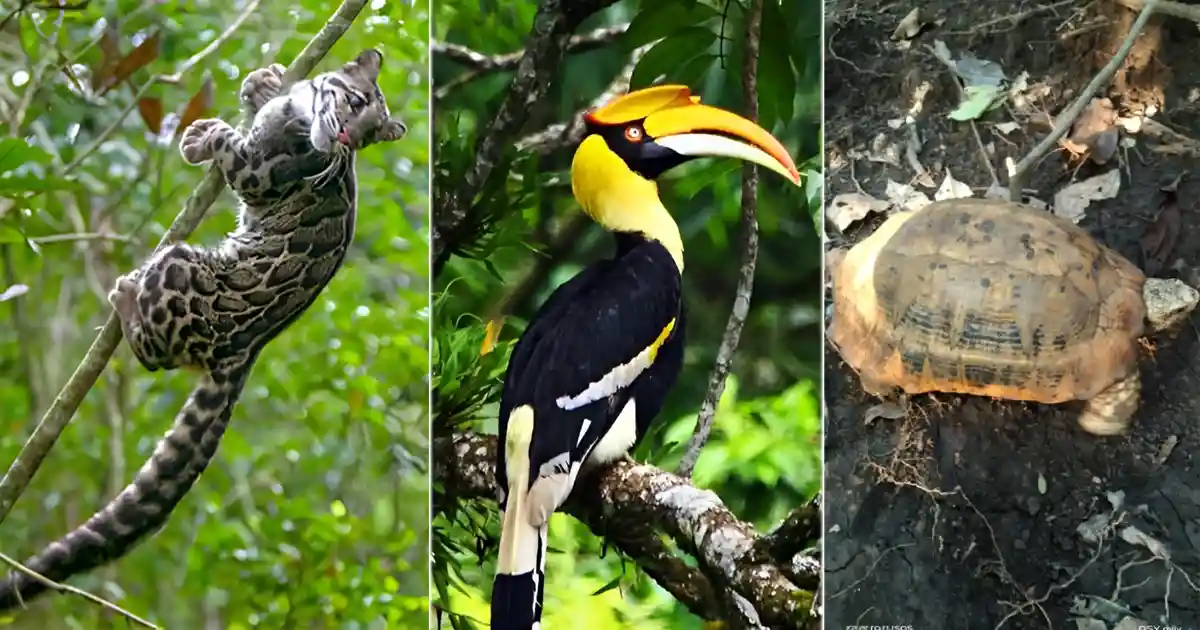
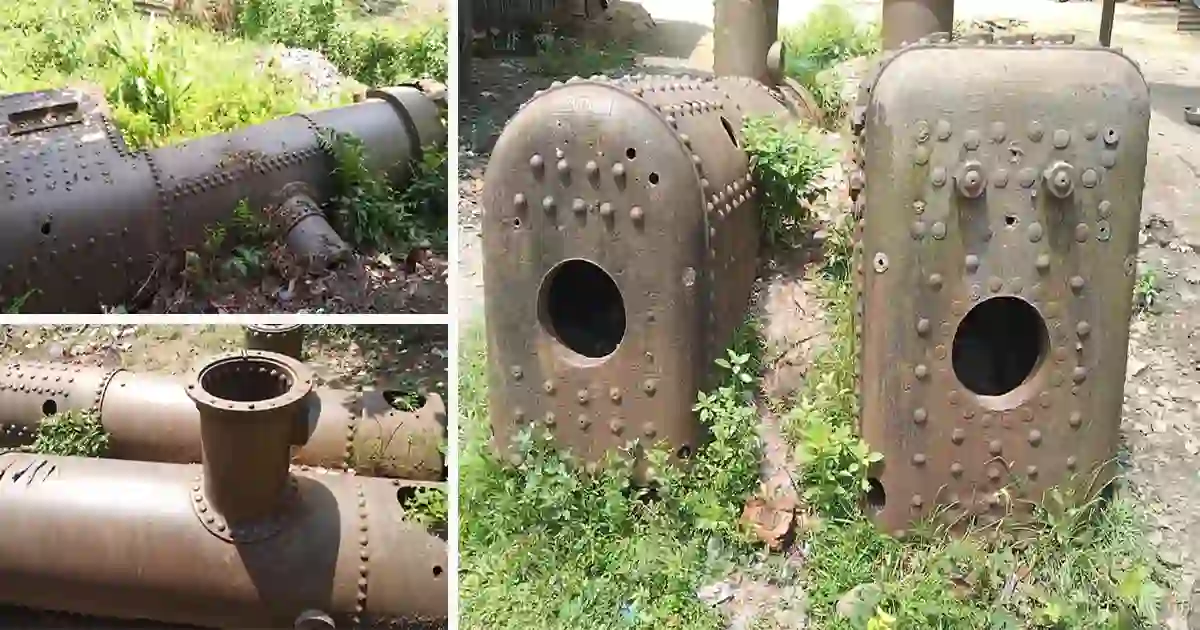
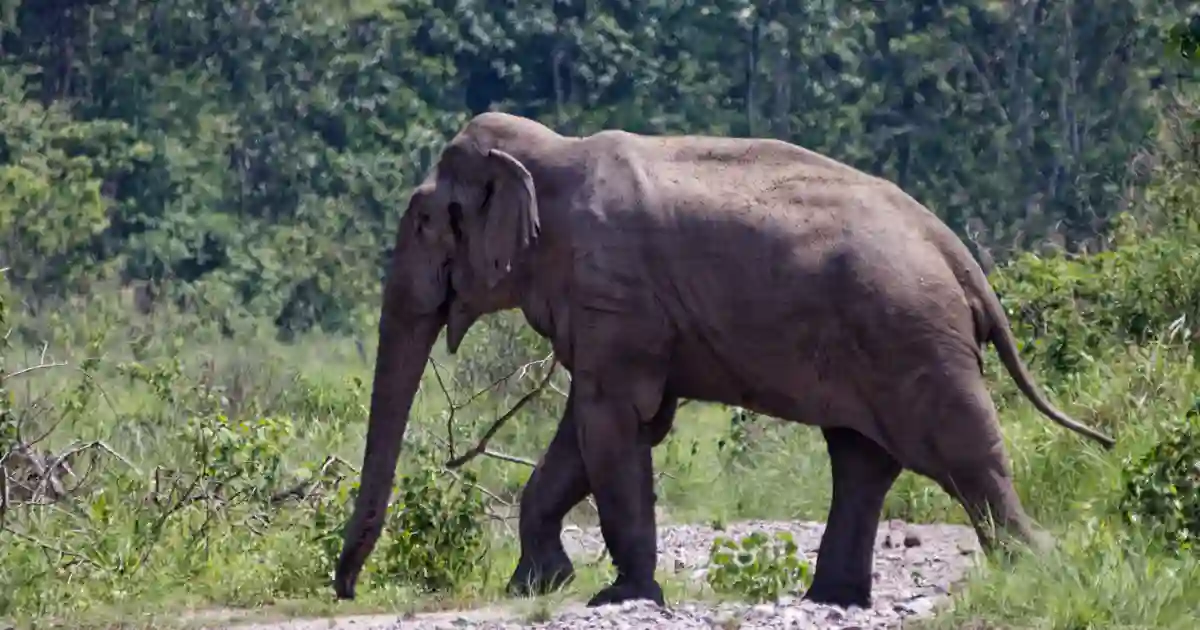









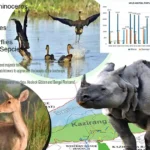

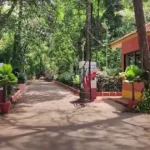
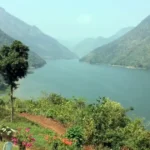


“Loved the clarity and depth of this piece. It really adds value to the conversation.” Click to Check it – Best IAS Coaching in delhi
”UPSC Calendar 2025” – Guru’s Ashram IAS.